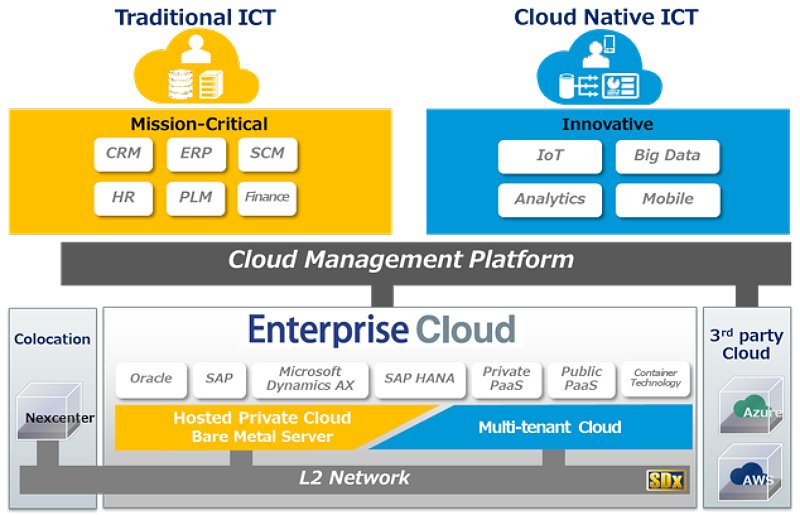Japanese networking and infrastructure giant NTT Communications has made a number of enhancements to its Enterprise Cloud service portfolio, emphasizing a shift towards hybrid architectures.
The company will offer a new way to organize cloud services, free connectivity between its private and public cloud services, and an all new management portal under the banner of ‘Cloud Native ICT’.
The enhancements are available immediately in Japan, and will gradually arrive to the UK, Singapore, US, Australia, Hong Kong and Germany before the end of the year.
Cloudy ambition
NTT Com is a subsidiary of Nippon Telegraph and Telephone Corporation, the largest telecommunications company in the world in terms of revenue. It was established by the Japanese government in 1952, and around a third of its shares are still owned by the state.
Today, NTT Com runs a network of more than 130 data centers worldwide, serving 196 countries and regions.
The company has been offering cloud services for years, but has failed to make a serious dent in the market – its cloud revenues grew 22.8 percent between 2014 and 2015, but totaled just 12.0 billion yen (approx. $571m). For comparison, AWS made more than $7 billion in its fiscal 2015.
In order to make its cloud services more appealing, NTT has re-engineered its approach. The Enterprise Cloud is now split into two distinct categories.
The first stop for ‘traditional’ ICT like CRM, ERP and PLM applications is the Hosted Private Cloud, which consists of dedicated bare-metal servers and private cloud servers that support several different hypervisors.
Emerging workloads in fields like the Internet of Things and Big Data analytics are directed towards NTT’s Enterprise-class Multi-tenant Cloud which is based on OpenStack and Cloud Foundry open source software. NTT says this service is especially suitable for agile and DevOps-oriented application development.
The two types of the cloud are connected at Layer 2 with a software-defined network, enabling customers to combine them in any way they desire. And best of all, any traffic traveling between the two types of NTT’s cloud will do so for free, using the company’s closed 10Gbps network.
The entire range of products and services can be managed through the all-new Cloud Management Platform, which can also take control of third-party cloud deployments from the likes of AWS or Azure.
“As enterprise businesses move towards digitalization, globalization and cloud, NTT Com will continue to help customers innovate business processes and create new business models with Enterprise Cloud, which has been enhanced to meet requirements of both secure and reliable ICT and flexible and agile ICT,” said Motoo Tanaka, senior vice president of Cloud Services at NTT Com.
The future roadmap for the Enterprise Cloud includes support for SAP HANA, virtual private PaaS and more enhanced cloud management capabilities.


